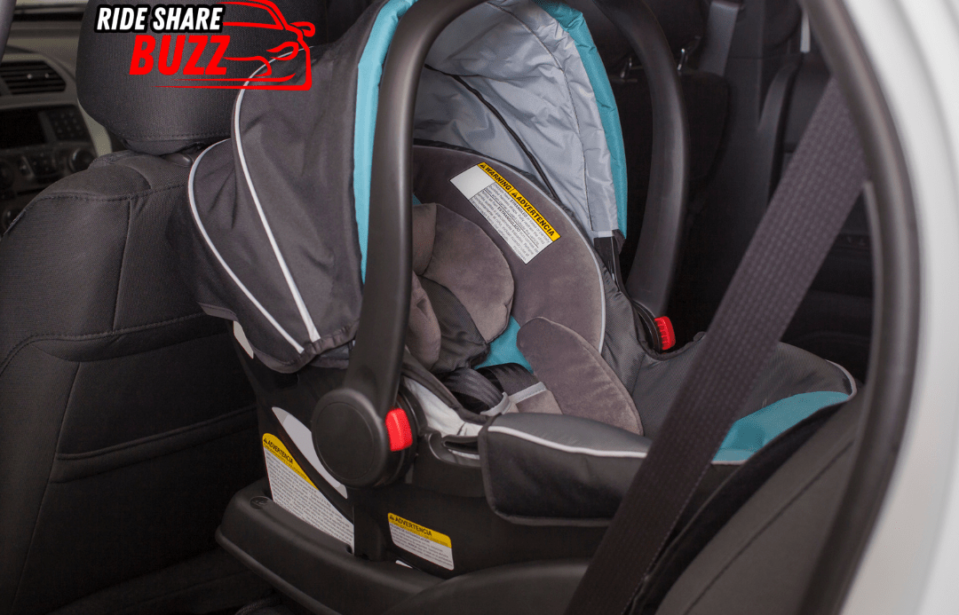As an Uber driver, you may occasionally encounter a rider who arrives without a car seat for their child, leaving you with a difficult decision to make. This situation raises important questions about your rights as a driver, the safety of your passengers, and the legal implications involved. In this comprehensive blog, we will delve into the guidelines, safety concerns, and federal, local, and Uber requirements surrounding Uber drivers refusing riders without car seats. We will also provide practical advice for both drivers and riders to ensure a safe and comfortable experience for all.
Uber’s Official Policy on Car Seats:
Uber, as one of the leading ride-sharing companies, has implemented guidelines to address the issue of car seat safety for children. According to Uber’s Community Guidelines, riders are responsible for ensuring that children are properly secured in an appropriate car seat or booster seat during their trip. Uber encourages riders to bring their own car seats and provides educational resources to emphasize the importance of car seat safety. However, Uber also recognizes the challenges that drivers may face when encountering riders without car seats.
Uber’s Guidelines for Drivers:
As an Uber driver, it’s important to understand your rights and responsibilities when it comes to car seat safety. Here’s what Uber’s guidelines state:
- Know Your Rights: Uber’s Community Guidelines explicitly grant drivers the right to decline a ride if a rider is not safely secured. This includes situations where a child is not properly restrained in a car seat. Uber encourages drivers to make informed decisions to ensure the safety of themselves and their passengers.
- Communicate Respectfully: Uber advises drivers to communicate respectfully with riders and offer alternatives. You can suggest that the rider request an Uber ride option that provides car seats, such as Uber Car Seat or Uber Family, if available in your region.
- Report Unsafe Practices: If a rider insists on riding without a car seat, Uber encourages drivers to report the incident through the app. This helps Uber address safety concerns and improve its policies.
- Stay Informed: Uber may have specific guidelines or requirements for drivers in certain regions. Stay updated by regularly checking the Uber Driver app or website for the latest information.
Federal and Local Laws on Car Seat Safety:
In addition to Uber’s guidelines, it’s crucial to understand the federal and local laws regarding car seat safety:
- Federal Law: The National Highway Traffic Safety Administration (NHTSA) sets standards and guidelines for child safety in vehicles. Federal law mandates that children up to a certain age, height, and weight must be secured in an appropriate car seat or booster seat. These requirements vary based on the child’s age and size, with infants and toddlers typically requiring rear-facing car seats.
- Local Laws: Individual states and localities may have their own specific car seat laws and regulations. These laws outline the age, weight, and height requirements for different types of car seats. As a driver, it’s important to be familiar with the laws in your state and locality to ensure compliance.
Uber’s Requirements and Initiatives:
Uber has taken steps to promote car seat safety and support drivers and riders:
- Uber Car Seat Option: Uber has introduced specific ride options, such as Uber Car Seat or Uber Family, in certain regions. These options provide riders with vehicles equipped with car seats, addressing the needs of families with young children.
- Educational Resources: Uber provides educational resources and safety campaigns to raise awareness among riders about the importance of car seat safety. They encourage riders to bring their own car seats and offer guidance on proper installation.
- Driver Support: Uber offers guidance and support to drivers through their website and app, providing information on car seat safety, local laws, and how to handle situations involving riders without car seats.
Practical Tips for Drivers and Riders:
Here are some practical tips for both drivers and riders to ensure a safe and smooth experience:
Drivers:
- Know the Laws: Familiarize yourself with federal, state, and local car seat laws to ensure compliance and safety.
- Stay Updated: Regularly check Uber’s website and app for the latest guidelines and requirements.
- Communicate Respectfully: Explain the safety concerns and offer alternatives to riders without car seats.
- Report Incidents: If a rider insists on riding without a car seat, report the incident through the app.
Riders:
- Bring a Car Seat: Always provide and properly install an appropriate car seat for your child.
- Plan Ahead: Allow extra time to secure the car seat before the trip.
- Communicate Needs: Clearly indicate your need for a car seat when booking a ride.
Conclusion:
As an Uber driver, understanding and adhering to federal, local, and Uber requirements regarding car seat safety is crucial. By refusing riders without car seats, you prioritize the safety and well-being of children. Riders, too, play a vital role in ensuring their children’s safety by providing car seats and planning. Together, we can create a culture of safety and responsibility, ensuring a positive experience for all involved.





Leave a comment